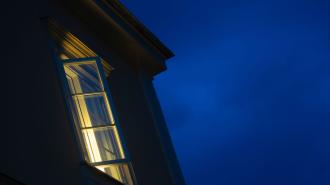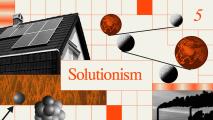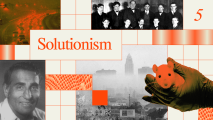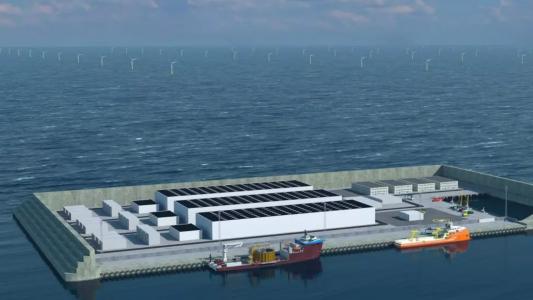In summer 2021, the gates of hell swung open, and the Pacific Northwest — land of mist, cloudy skies, and forest green — was plunged into a kiln, recording temperatures up to 108 in Seattle, 116 in Oregon, and killing over a thousand people, predominantly in British Columbia.
Over the course of weeks, probably a billion creatures in the region’s rich seas were killed; in Washington, overwhelmed hospitals cooled down overheated patients in body bags packed with ice, in an macabre but lifesaving act of “MacGyver medicine.”
Inspired by the heatwave, researchers at the University of Oregon — where it hit 111 degrees — believe they have found cheap, simple techniques, called passive cooling, to keep indoor temperatures from hitting dangerous extremes.
Climate change is making extreme heat waves more likely.
By pulling down the shades at peak sun and opening windows up for cool night air, living spaces can be kept from becoming too hot, the researchers say. The basic techniques are especially important in regions like the Pacific Northwest, where active air conditioning is not the norm, and where conditions are usually conducive to passive cooling methods.
“In the Pacific Northwest, where we get such cool night air, we have an amazing climate for passive cooling,” UO building scientist and study leader Alexandra Rempel said. “And we should take advantage of it.”
Into the oven: Powerful heat waves like the kind that scorched the Pacific Northwest in 2021, or the sweltering conditions in cities in India and Pakistan, have been exacerbated by climate change, which is making extreme heat ever more likely.
“Extreme heat events are becoming more frequent and more severe in the Pacific Northwest and in comparable dry-summer climates worldwide, increasing the occurrence of heat-related illness and death,” the researchers wrote in their study, to be published in the September issue of the journal Applied Energy.
The WHO considers heat waves one of the most dangerous of natural hazards, and they can be exacerbated in cities by the “urban heat island” effect, where urban infrastructure, like buildings and asphalt, absorb and then radiate more of the sun’s heat.
Such islands can be up to 7 degrees higher than surrounding areas during the day.
Keeping residents cool, especially in neighborhoods with limited resources where greenery and AC are going to be limited, may be key to curbing deaths in a warming world. An additional benefit may be limiting the cost, electrical power consumption, and hot air expelled by ever more air conditioning.
By pulling down the shades at peak sun and opening windows up for cool night air, examples of “passive cooling,” the researchers believe that living spaces can be kept from becoming too hot.
Passive cooling: Passive cooling techniques are promising, the researchers wrote, but their ability to protect people during extreme heat waves has not been investigated.
The researchers set out to test the degree of change that window shades and natural ventilation — sometimes with a fan, too — could make to house temperatures.
Using weather data from the 2021 heatwave, they created a computer simulation of a west-facing, two-bedroom apartment and tested various passive cooling strategies — kind of like an F1 team running different car layouts.
“Without any shades or ventilation, you’ll quickly be in [the] danger zone,” undergrad co-author Jackson Danis said.
But the team found that opening the windows even briefly helped reduce temperatures from dangerous levels, while a combination of opening windows and drawing shades could make the apartment “surprisingly livable,” even in triple digits.
Intuitively, opening the windows was most impactful at night and in the morning, when outside air is coolest, and was more effective when using a fan, too.
While intuitive, the impact of passive cooling was unexpected, the researchers said.
Window shades had the biggest impact in the afternoons, when the sun beat on the windows, with thick outdoor shades being the most effective. The passive cooling reduced the need for active cooling, like AC, by 80%.
“It helps keep AC demand within the reach of renewable energy sources,” Alexandra Remple said.
When simulated using the hottest data set, from Portland, the team found that passive cooling kept the simulated apartment out of the danger zone for three days, lowering the temperature by 25 degrees, compared to doing nothing.
Passive cooling benefits from some planning — opening the windows the night before a heat wave to preemptively cool the house, and lowering the shades before the afternoon sun hits — so it does pay to keep an eye on the forecast.
While seemingly common sense, “the magnitude of the improvement is something that we didn’t expect,” mathematician and study author Alan Remple said.
We’d love to hear from you! If you have a comment about this article or if you have a tip for a future Freethink story, please email us at [email protected].






